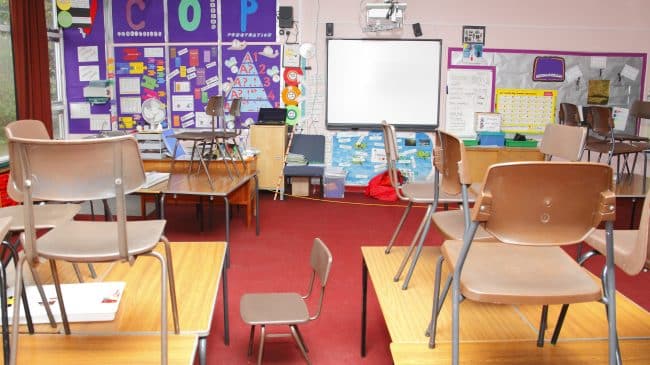With the new school year well underway, districts should be getting back into the swing of things. But that’s not happening at Houston Independent School District, where the high likelihood of a state takeover has been looming for months. A report published by the Texas Education Agency in August exposing pervasive school board corruption in Houston, coupled with low student performance, are two major reasons the state is likely to step in. The investigation confirmed incidents of secret meetings, overreach by board members at individual schools and corrupt attempts to influence private contracts. But when rogue district leaders use their authority improperly, their power should be handed over to school principals, not state bureaucrats.
Although state intervention can sometimes help districts get out of debt or boost student learning, there are many cases in which state officials have been unable to do much better than local school boards on improving student achievement. One 2014 analysis from The Hechinger Report examined Mississippi’s takeover of 15 school districts and found no clear example where state governance consistently and substantially improved student learning.
Political scientist Domingo Morel, author of Takeover: Race, Education, and American Democracy, further argues that they disproportionately affect communities of color, stripping them of local control as if it’s something they can’t be trusted with.
He has a point. Though states often try to legitimately exercise accountability when they take over low-performing districts, the fact that this usually means curtailing the authority of school boards elected by minority communities is a problem.
But revoking local representation isn’t the only option for struggling districts. Another path is to thin out district central offices and instead give individual school leaders more power — leaving state officials out of it.
In the vast majority of districts, central office administrators appointed by the school board are in the driver’s seat. They make most of the budgeting decisions, determine school staffing, select and purchase curriculum, set learning objectives and pursue their own initiatives. But while this kind of local governance structure may seem desirable, it can be too easily captured by political interests. Teachers unions are common offenders, but they aren’t the only ones. The consequences of a politically vulnerable school governance structure that puts too much power in the hands of those further away from the kids can be seen everywhere. Wasteful spending on things like ineffective technology, additional administrators/support staff, inequitable funding and underutilized facilities are just some examples.
As I highlighted in a recent Reason Foundation report, a growing number of school districts are finding success in giving principals the flexibility to make decisions — a model called student-based budgeting. The report also highlights how districts such as Boston and Denver have successfully used this model for years, with around half of district operating dollars following children directly to schools and ensuring that disadvantaged students receive additional funding.
With those dollars, principals have wide control over the types of staff they hire and the curriculum they purchase, and they can give out stipends and bonuses. Over the time that they’ve used student-based budgeting, both Denver (since 2007) and Boston (since 2011) have seen significant gains in student achievement. While these gains can’t be solely attributed to student-based budgeting, the findings are consistent with international research suggesting that highly developed countries that give school leaders more autonomy see learning benefits for kids. At the very least, these cases show that decentralization can work and can play a role in helping kids learn more. And despite the recent school board drama, Houston is another district using a partially decentralized budgeting model and seeing some success with it.
To be clear, strong district leadership is still important for successful student-based budgeting. But district leaders should be supporting school leaders, since school leaders aren’t as politically vulnerable and are often better equipped to understand their schools’ needs. Houston is only one in a long line of cases showing that the prevailing school board power structure is too often a problem for kids. On Sept. 12, reports surfaced that the FBI is investigating corruption in Pennsylvania’s Harrisburg School District. Over the past few decades, states have taken over more than 100 school districts across the country, primarily for financial mismanagement but also sometimes for corruption.
State takeovers may be necessary in cases of severe fiscal problems or as a short-term solution. But given the high political costs and the low probability that they will benefit students and families in the long run, it’s worth considering an alternative. An effective way to insulate public schools from politics while simultaneously enfranchising local communities is to implement a system of accountability from below, not from above.
This column was originally published on The74Million.org.

